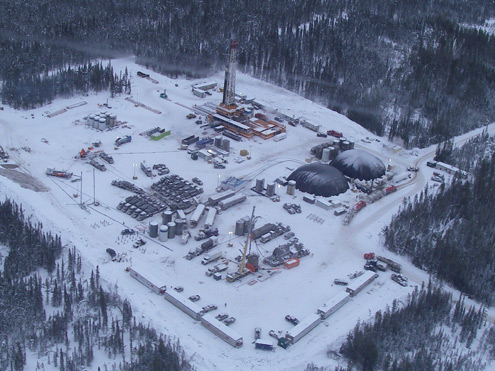For all the attention the Shale Revolution has garnered, we are only beginning to see its longer-term impact — and not only in reshaping the energy landscape and raising energy policy questions. The Shale Revolution is also an emerging factor enabling US economic revitalization and impacting long-term geopolitical interests.
Shale gas is dramatically altering the US energy mix. According the US Energy Information Agency (EIA), natural gas now rivals coal for electricity production (coal, 34%, gas, 32% in May), with the added benefit of helping to reduce GHG emissions (1.7% in 2011). Yet at the same time, lower prices of gas is also changing the economics of wind, solar and further dampening that of nuclear.
Indeed, the Shale Revolution raises a number of questions about US energy policies, starting with those surrounding the lack of more uniform regulatory policies to ensure safety:
- In light of the rise of natural gas realities, does it make more sense to rethink subsidies to wind and solar and instead give more priority to building a nationwide smart grid network (which would ultimately benefit solar and wind)?
- Is gas substantial and long-term enough to warrant serious efforts to actively consider converting transport from gasoline to natural gas – for fleets, if not for private vehicles?
- Will the move from coal to gas for electricity spur efforts to develop carbon sequestration technology so that it becomes cost-competitive, enabling clean coal to compete with gas and renewable as a source of electricity?
- With the US now the world’s largest gas producer, whether – and to what extent – to allow gas exports? Certainly, stranded gas in Alaska, for example would find ready markets in Japan and elsewhere in East Asia.
Then there is the broader impact on the US economy. In addition to enabling the US to reducing dependence on oil imports from 60% to 42%, unconventional gas (shale, tight sands and coalbed methane) is supporting one million jobs –projected to grow to 1.4 million jobs by 2015, according to an IHS study. Shale is spurring US manufacturing in downstream industries – petrochemical, chemical, metals and other energy-intensive industries. A Price WaterhouseCooper (PWC) study projects that the benefits from shale could allow US industry to lower raw materials and energy costs by $11.6 billion and create approximately one million more jobs by 2025.
Lastly, there are the geopolitical ramifications of the Shale revolution with Russia and Iran the apparent losers. With shale allowing US gas to sell at 75% below what Gazprom charges E.European customers, the most important cog in Putin’s State capitalist crony system may be at risk. Gazprom has been forced to lower prices to Europe and is being investigated by the European Commission for price fixing. The result will likely increase pressure on Gazprom to lower prices. Already Gazprom’s market value has shriveled from $365 billion in 2008 to $120 billion today and major projects such as the Shtokman gas project in the Arctic have been cancelled. As Gazprom has been a veritable cash cow enabling Putin to build and sustain his ruling network of cronies, Gazprom’s uncertain fate raises intriguing questions about Russia’s future as a petro-state.
Robert A. Manning is a senior fellow at the Atlantic Council. This piece originally appeared on GE’s Ideas Lab.
Image: shale_gas1.jpg
